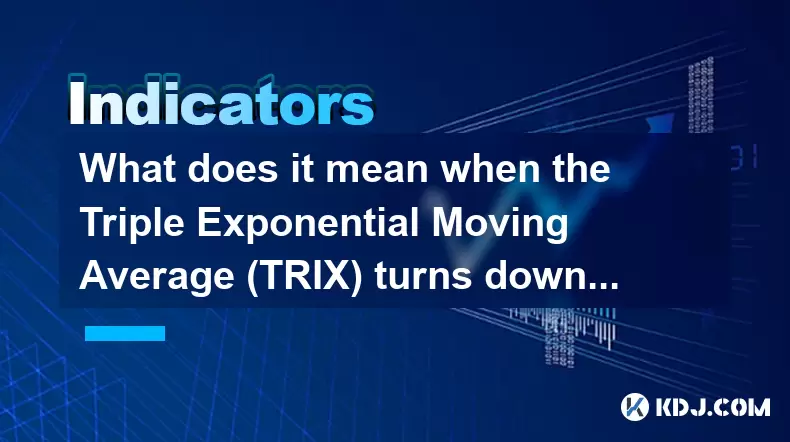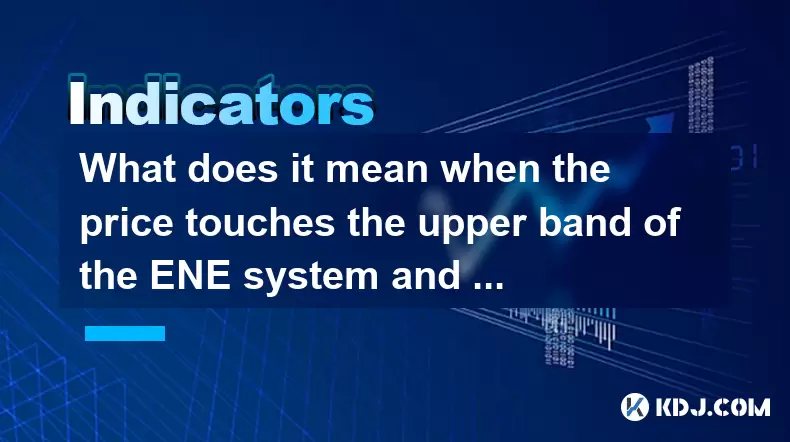-
 Bitcoin
Bitcoin $116700
0.48% -
 Ethereum
Ethereum $4213
6.27% -
 XRP
XRP $3.280
1.22% -
 Tether USDt
Tether USDt $1.000
0.02% -
 BNB
BNB $805.1
2.46% -
 Solana
Solana $180.2
2.65% -
 USDC
USDC $0.0000
0.02% -
 Dogecoin
Dogecoin $0.2412
8.50% -
 TRON
TRON $0.3356
-1.11% -
 Cardano
Cardano $0.8108
3.59% -
 Hyperliquid
Hyperliquid $43.89
8.53% -
 Chainlink
Chainlink $21.15
10.75% -
 Stellar
Stellar $0.4502
1.41% -
 Sui
Sui $3.935
4.69% -
 Bitcoin Cash
Bitcoin Cash $570.7
-1.75% -
 Hedera
Hedera $0.2636
3.28% -
 Avalanche
Avalanche $24.25
4.48% -
 Ethena USDe
Ethena USDe $1.001
0.03% -
 Litecoin
Litecoin $122.0
-0.08% -
 Toncoin
Toncoin $3.445
2.68% -
 UNUS SED LEO
UNUS SED LEO $8.979
-0.08% -
 Shiba Inu
Shiba Inu $0.00001379
6.73% -
 Uniswap
Uniswap $10.91
2.00% -
 Polkadot
Polkadot $4.106
5.39% -
 Dai
Dai $1.000
0.02% -
 Pepe
Pepe $0.00001227
9.07% -
 Bitget Token
Bitget Token $4.507
0.72% -
 Cronos
Cronos $0.1576
3.40% -
 Monero
Monero $272.0
-1.68% -
 Ethena
Ethena $0.7502
21.27%
What does it mean when the Triple Exponential Moving Average (TRIX) turns downward but does not form a death cross?
A downward-turning TRIX without a death cross signals weakening momentum but isn't a confirmed sell signal—use context, divergence, and crossovers for validation.
Aug 09, 2025 at 10:35 pm

Understanding the Triple Exponential Moving Average (TRIX)
The Triple Exponential Moving Average, commonly referred to as TRIX, is a momentum oscillator designed to filter out short-term volatility and highlight longer-term trends in price movements. Unlike traditional moving averages, TRIX applies three layers of exponential smoothing to the price data, which significantly reduces noise. The resulting value is then expressed as the percentage rate of change over a defined period, typically 14 or 15 periods. This makes TRIX particularly effective at identifying sustained trend changes rather than minor fluctuations. Traders use TRIX to detect potential reversals, confirm trend strength, and generate buy or sell signals based on crossovers and divergence.
Interpreting a Downward Turn in TRIX
When the TRIX line turns downward, it signals a shift in momentum from bullish to bearish. This movement suggests that the rate of change in the triple-smoothed price is decreasing, which often precedes a slowdown or reversal in the prevailing uptrend. However, a downward turn does not automatically indicate a strong sell signal. It merely reflects weakening upward momentum. The key distinction lies in whether this turn leads to a crossover with the signal line. A downward turn without a crossover implies that while momentum is fading, the bearish sentiment has not yet been confirmed by a sustained shift in the oscillator’s trajectory.
Differentiating Between a Downward Turn and a Death Cross
A death cross in TRIX occurs when the TRIX line crosses below its signal line (a moving average of TRIX itself, usually 9-period). This crossover is considered a strong bearish signal because it confirms that short-term momentum has decisively turned negative relative to its recent average. In contrast, when TRIX turns downward but does not form a death cross, the signal line remains above the TRIX line, and no actual crossover takes place. This means that although momentum is declining, the bearish pressure is not yet strong enough to trigger a confirmed reversal signal. The absence of a death cross suggests caution rather than immediate action.
Assessing Market Context and Confirmation Signals
To accurately interpret a downward-turning TRIX without a death cross, traders must consider broader market context. Key factors include:
- Price action trends: Is the underlying asset still trading above key support levels?
- Volume patterns: Are declining prices accompanied by increasing volume, indicating stronger selling pressure?
- Divergence analysis: Is there a bearish divergence where price makes a higher high but TRIX makes a lower high?
- Support from other indicators: Do tools like RSI, MACD, or on-balance volume corroborate the weakening momentum?
For example, if TRIX turns down while the price remains in an upward channel and volume is low, the signal may reflect a temporary pullback rather than a trend reversal. Conversely, if the same TRIX behavior occurs during a breakdown from a resistance level with high volume, it may foreshadow a deeper correction.
Practical Trading Implications and Strategy Adjustments
When TRIX turns downward without forming a death cross, traders should consider adjusting position exposure rather than initiating full exits. Possible actions include:
- Reducing long positions incrementally to lock in profits
- Setting tighter stop-loss orders to protect gains
- Avoiding new long entries until momentum stabilizes
- Monitoring for a potential death cross as a confirmation trigger
For example, if you're using a 14-period TRIX with a 9-period signal line, observe the gap between the two lines. If TRIX begins to slope down but remains above the signal line, watch for narrowing distance between them. A narrowing gap increases the probability of an upcoming crossover. Traders can use this phase to prepare for a potential exit or short entry, but should wait for the actual crossover before acting decisively.
Common Misinterpretations and Risk Management
A frequent mistake is treating every downward turn in TRIX as a sell signal. This can lead to premature exits during healthy corrections within strong uptrends. The triple smoothing nature of TRIX means it reacts slowly, so short-term dips in the oscillator may not reflect lasting trend changes. To mitigate risk:
- Use multiple timeframes: Check TRIX on daily, 4-hour, and 1-hour charts to assess alignment
- Apply trend filters: Only consider downward TRIX signals when price is below a key moving average, such as the 200-day EMA
- Incorporate price structure analysis: Look for breakdowns from consolidation patterns or failed breakouts
For instance, if TRIX turns down on a 4-hour chart but remains positive on the daily chart, the higher timeframe trend may still be intact, reducing the urgency of the bearish signal.
Frequently Asked Questions
What does it mean if TRIX turns down but stays above zero?
A downward turn while TRIX remains above zero indicates that momentum is weakening but still positive overall. The asset may be experiencing a pause in the uptrend rather than a reversal. This scenario often precedes consolidation or a shallow pullback.
Can TRIX generate false signals when it turns down without a death cross?
Yes, especially in ranging or choppy markets. The triple smoothing can cause delayed reactions, making TRIX susceptible to whipsaws. False signals are more likely when the price is moving sideways, and momentum oscillations are frequent.
How should I adjust my trading strategy if TRIX turns down but the price continues to rise?
This situation indicates bearish divergence. While price makes higher highs, TRIX making lower highs suggests weakening momentum. Consider this a warning sign. You might secure partial profits or tighten risk parameters, but avoid full reversal until confirmation, such as a death cross or price breaking support.
Is a downward-turning TRIX more reliable on higher timeframes?
Generally, yes. On daily or weekly charts, TRIX movements are less prone to noise. A downward turn on these timeframes carries more weight and often aligns with significant trend shifts. Signals on lower timeframes (e.g., 15-minute) should be interpreted with caution and ideally confirmed by higher-timeframe trends.
Disclaimer:info@kdj.com
The information provided is not trading advice. kdj.com does not assume any responsibility for any investments made based on the information provided in this article. Cryptocurrencies are highly volatile and it is highly recommended that you invest with caution after thorough research!
If you believe that the content used on this website infringes your copyright, please contact us immediately (info@kdj.com) and we will delete it promptly.
- Trump, Crypto Vehicle, and WLFI Tokens: A New York Minute on the Latest Buzz
- 2025-08-10 00:30:12
- Wheat Penny Fortune: Unearthing Valuable Coins in Your Pocket Change
- 2025-08-10 00:35:19
- AI Coin Mania: Dubai Millionaires Eye 20x Gains!
- 2025-08-09 23:10:12
- ChatGPT's Hot Takes: Meme Coins to Buy Now for a Wild 2025!
- 2025-08-09 23:10:12
- Jurassic Park Vibes in Your Pocket: The Colourful Canadian Coin Featuring a Dinosaur Eye
- 2025-08-09 23:50:12
- Altcoins on the Radar: VeChain, Ethereum, and the Shifting Crypto Landscape
- 2025-08-09 23:50:12
Related knowledge

What does it mean when the price is trading above the SAR indicator but the red dots are densely packed?
Aug 09,2025 at 11:49pm
Understanding the SAR Indicator and Its Visual SignalsThe SAR (Parabolic Stop and Reverse) indicator is a technical analysis tool used primarily to de...

What does it mean when the MACD histogram continues to shorten but the price reaches a new high?
Aug 09,2025 at 09:29pm
Understanding the MACD Histogram and Its ComponentsThe MACD (Moving Average Convergence Divergence) indicator is a widely used technical analysis tool...

What does it mean when the Triple Moving Average (TRIX) turns downward but the price doesn't fall?
Aug 09,2025 at 12:42pm
Understanding the Triple Moving Average (TRIX) IndicatorThe Triple Moving Average, commonly known as TRIX, is a momentum oscillator designed to filter...

What does it mean when the price touches the upper band of the ENE system and then falls back?
Aug 10,2025 at 12:42am
Understanding the ENE Indicator StructureThe ENE (Envelope) indicator is a technical analysis tool used in cryptocurrency trading to identify potentia...

What does it mean when the Williams' oscillator repeatedly hits bottoms but fails to rebound?
Aug 09,2025 at 09:28am
Understanding the Williams %R OscillatorThe Williams %R oscillator, developed by Larry Williams, is a momentum indicator used in technical analysis to...

What does it mean when the 5-day moving average crosses above the 20-day moving average in a moving average system?
Aug 10,2025 at 12:49am
Understanding Moving Averages in Cryptocurrency TradingIn cryptocurrency trading, moving averages are among the most widely used technical indicators....

What does it mean when the price is trading above the SAR indicator but the red dots are densely packed?
Aug 09,2025 at 11:49pm
Understanding the SAR Indicator and Its Visual SignalsThe SAR (Parabolic Stop and Reverse) indicator is a technical analysis tool used primarily to de...

What does it mean when the MACD histogram continues to shorten but the price reaches a new high?
Aug 09,2025 at 09:29pm
Understanding the MACD Histogram and Its ComponentsThe MACD (Moving Average Convergence Divergence) indicator is a widely used technical analysis tool...

What does it mean when the Triple Moving Average (TRIX) turns downward but the price doesn't fall?
Aug 09,2025 at 12:42pm
Understanding the Triple Moving Average (TRIX) IndicatorThe Triple Moving Average, commonly known as TRIX, is a momentum oscillator designed to filter...

What does it mean when the price touches the upper band of the ENE system and then falls back?
Aug 10,2025 at 12:42am
Understanding the ENE Indicator StructureThe ENE (Envelope) indicator is a technical analysis tool used in cryptocurrency trading to identify potentia...

What does it mean when the Williams' oscillator repeatedly hits bottoms but fails to rebound?
Aug 09,2025 at 09:28am
Understanding the Williams %R OscillatorThe Williams %R oscillator, developed by Larry Williams, is a momentum indicator used in technical analysis to...

What does it mean when the 5-day moving average crosses above the 20-day moving average in a moving average system?
Aug 10,2025 at 12:49am
Understanding Moving Averages in Cryptocurrency TradingIn cryptocurrency trading, moving averages are among the most widely used technical indicators....
See all articles

























































































